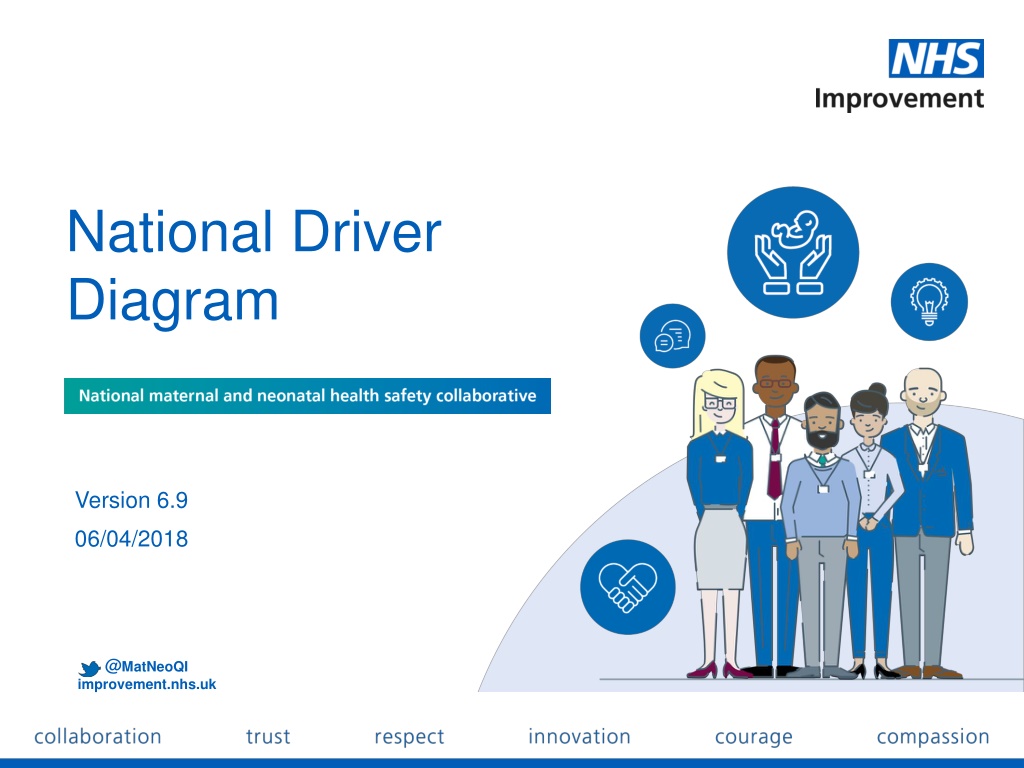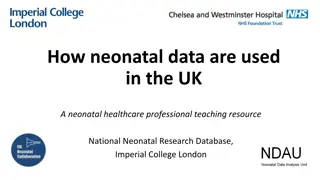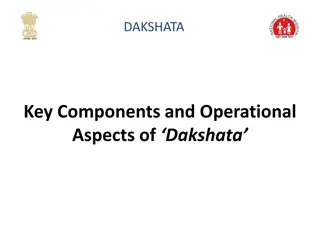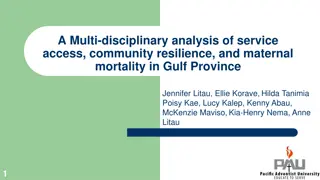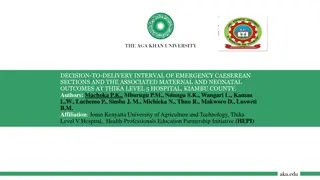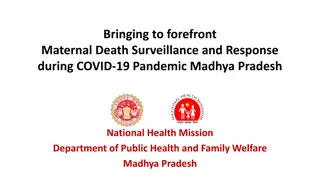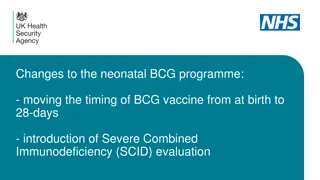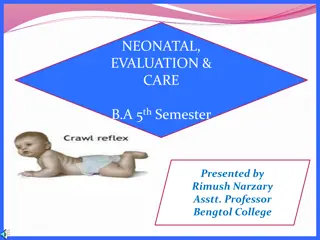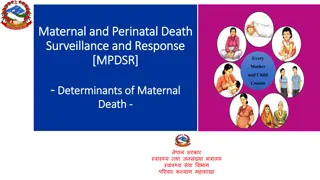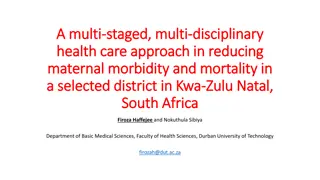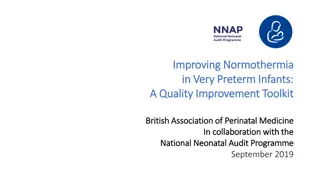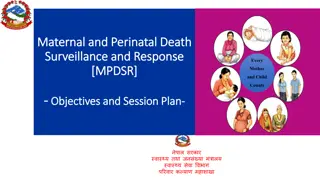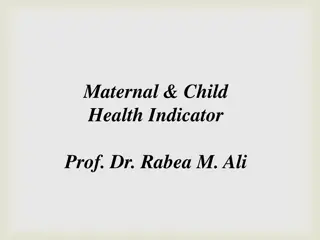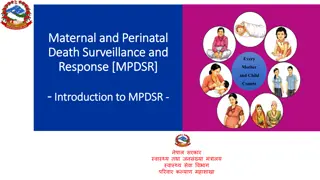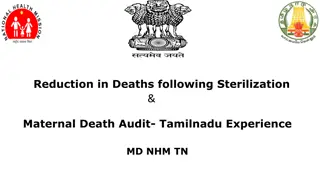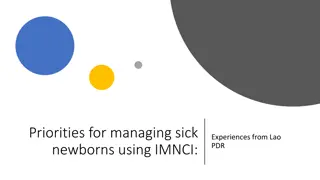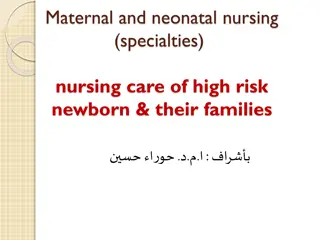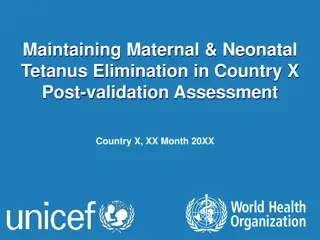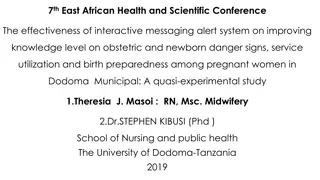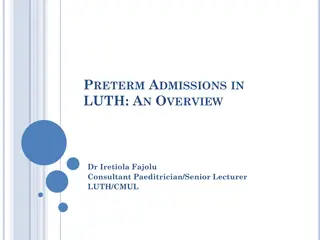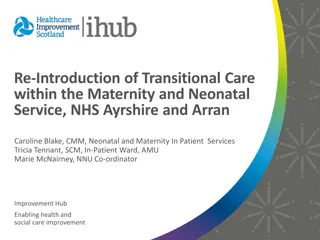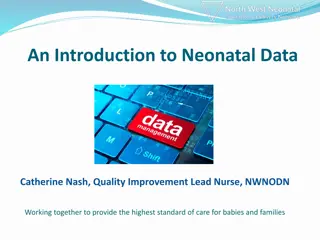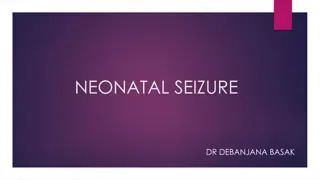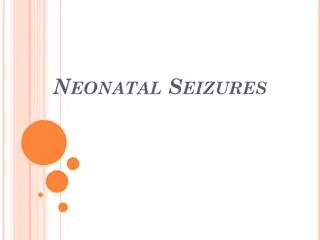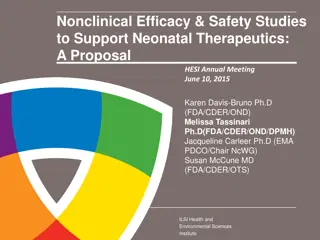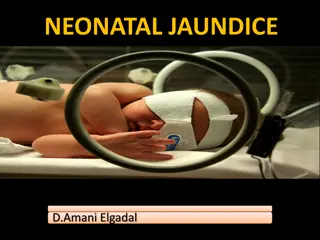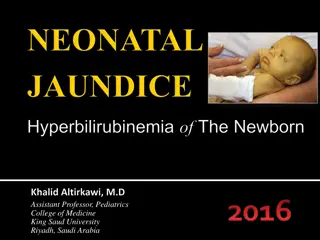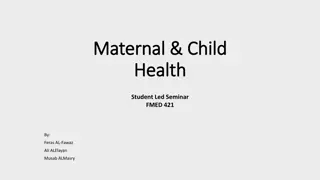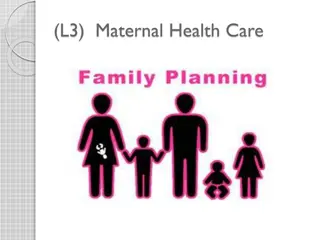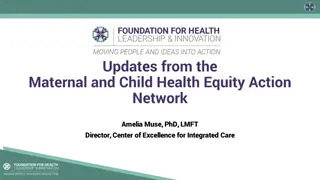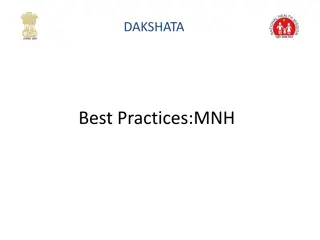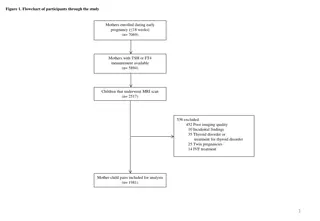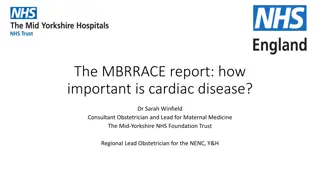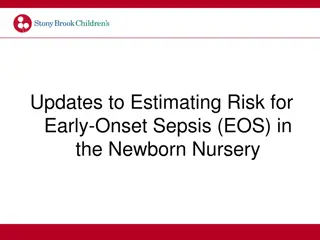Enhancing Maternal and Neonatal Healthcare Improvements
This initiative aims to improve the safety and outcomes of maternal and neonatal care in England by reducing unwarranted variations, providing high-quality healthcare experiences, and enhancing systems and processes for better care. Key focuses include promoting smoke-free pregnancies, optimizing care for very preterm infants, managing diabetes in pregnancy, enhancing patient and staff experiences, and reducing stillbirths and neonatal deaths by 20% by 2020.
Download Presentation

Please find below an Image/Link to download the presentation.
The content on the website is provided AS IS for your information and personal use only. It may not be sold, licensed, or shared on other websites without obtaining consent from the author. Download presentation by click this link. If you encounter any issues during the download, it is possible that the publisher has removed the file from their server.
E N D
Presentation Transcript
National Driver Diagram Version 6.9 06/04/2018 @MatNeoQI improvement.nhs.uk
Aim Primary Drivers Secondary Drivers Creating the conditions for a culture of safety and continuous improvement To improve the safety and outcomes of maternal and neonatal care by reducing unwarranted variation and provide a high quality healthcare experience for all women, babies and families across maternity and neonatal care settings in England Improve the proportion of smoke free pregnancies Develop safe and highly reliable systems, processes and pathways of care Improve the optimisation and stabilisation of the very preterm infant Improve the detection and management of diabetes in pregnancy Improve the experience of mothers, families and staff Improve the detection and management of neonatal hypoglycaemia Learn from excellence and error or incidents Reduce the rate of stillbirths, neonatal death and brain injuries occurring during or soon after birth by 20% by 2020 Improving the quality and safety of care through clinical excellence Improve the early recognition and management of deterioration during labour and early post partum period
Aim Primary Drivers Secondary Drivers Understand the culture and learning system in the department Understand the culture and learning system in the department Creating the conditions for a culture of safety and continuous improvement Build capability to improve both the culture and the learning system in the department Build capability to improve both the culture and the learning system in the department Develop and nurture the conditions that enable a just and safe culture Develop safe and highly reliable systems, processes and pathways of care Improve work processes and outcomes for mothers and babies using improvement tools and measurements over time Learn from and design reliable pathways of care Work with mothers and families to improve their experience of care Improve the proportion of smoke free pregnancies Improve the experience of women, families and staff Work with staff to improve the work environment to support staff to deliver safer care Work effectively with local network and commissioning organisations to develop effective local maternity systems Learn effectively from episodes of avoidable harm Learn from excellence and error or incidents Learn effectively from examples of high quality care or excellence Share findings from incidents and high quality care between organisations and within local maternity systems to aid adoption and spread Increase the identification of women who smoke during their pregnancies Improving the quality and safety of care through clinical excellence Increase the provision of effective staff training in relation to smoking during pregnancy Increase in the provision of effective treatment to support staff to stop smoking Establish a multi-agency partnership to support the commissioning and development of effective pathways across the LMS to increase the number of smokefree pregnancies
Aim Primary Drivers Secondary Drivers Creating the conditions for a culture of safety and continuous improvement Understand the culture and learning system in the department Understand the culture and learning system in the department Build capability to improve both the culture and the learning system in the department Build capability to improve both the culture and the learning system in the department Develop and nurture the conditions that enable a just and safe culture Improve work processes and outcomes for mothers and babies using improvement tools and measurements over time Develop safe and highly reliable systems, processes and pathways of care Learn from and design reliable pathways of care Work with mothers and families to improve their experience of care Improve the optimisation and stabilisation of the very preterm infant Work with staff to improve the work environment to support staff to deliver safer care Improve the experience of women, families and staff Work effectively with local network and commissioning organisations to develop effective local maternity systems Learn effectively from episodes of avoidable harm Learn effectively from examples of high quality care or excellence Learn from excellence and error or incidents Share findings from incidents and high quality care between organisations and within local maternity systems to aid adoption and spread Antenatal optimisation: support the effective optimisation of preterm infants prior to the time of birth Improving the quality and safety of care through clinical excellence Peri-partum optimisation: support the effective optimisation of preterm infants around the time of birth Post-partum optimisation: support the effective optimisation of preterm infants immediately after the time of birth
Aim Primary Drivers Secondary Drivers Understand the culture and learning system in the department Understand the culture and learning system in the department Creating the conditions for a culture of safety and continuous improvement Build capability to improve both the culture and the learning system in the department Build capability to improve both the culture and the learning system in the department Develop and nurture the conditions that enable a just and safe culture Improve work processes and outcomes for mothers and babies using improvement tools and measurements over time Develop safe and highly reliable systems, processes and pathways of care Learn from and design reliable pathways of care Work with mothers and families to improve their experience of care Improve the detection and management of diabetes Work with staff to improve the work environment to support staff to deliver safer care Improve the experience of women, families and staff Work effectively with local network and commissioning organisations to develop effective local maternity systems Learn effectively from episodes of avoidable harm Learn effectively from examples of high quality care or excellence Learn from excellence and error or incidents Share findings from incidents and high quality care between organisations and within local maternity systems to aid adoption and spread Support an increase in pre-pregnancy preparation for women with established diabetes Improving the quality and safety of care through clinical excellence Support an increase in the diagnosis of gestational diabetes Support antenatal management of mothers with diabetes in pregnancy Support planning of delivery Support postnatal planning of care
Aim Primary Drivers Secondary Drivers Understand the culture and learning system in the department Understand the culture and learning system in the department Creating the conditions for a culture of safety and continuous improvement Build capability to improve both the culture and the learning system in the department Build capability to improve both the culture and the learning system in the department Develop and nurture the conditions that enable a just and safe culture Develop safe and highly reliable systems, processes and pathways of care Improve work processes and outcomes for mothers and babies using improvement tools and measurements over time Learn from and design reliable pathways of care Work with mothers and families to improve their experience of care Improve the detection and management of neonatal hypoglycae mia Improve the experience of women, families and staff Work with staff to improve the work environment to support staff to deliver safer care Work effectively with local network and commissioning organisations to develop effective local maternity systems Learn effectively from episodes of avoidable harm Learn from excellence and error or incidents Learn effectively from examples of high quality care or excellence Share findings from incidents and high quality care between organisations and within local maternity systems to aid adoption and spread Develop effective and structured antenatal and postnatal care to reliably and proactively identify and mitigate risks of hypoglycaemia Improving the quality and safety of care through clinical excellence Improve care processes to provide optimal thermoregulation, nutrition for mother/baby time during the antenatal and postnatal periods Improve care processes to provide accurate monitoring of blood glucose where required during the postnatal period Support mothers and families to coproduce tools and techniques to support nutrition, temperature and baby s time with mother
Aim Primary Drivers Secondary Drivers Understand the culture and learning system in the department Understand the culture and learning system in the department Creating the conditions for a culture of safety and continuous improvement Build capability to improve both the culture and the learning system in the department Build capability to improve both the culture and the learning system in the department Develop and nurture the conditions that enable a just and safe culture Improve work processes and outcomes for mothers and babies using improvement tools and measurements over time Develop safe and highly reliable systems, processes and pathways of care Improve the prevention, early recognition and management of sepsis, fetal hypoxia and maternal haemorrhage during and immediately after labour Learn from and design reliable pathways of care Work with mothers and families to improve their experience of care Improve the experience of women, families and staff Work with staff to improve the work environment to support staff to deliver safer care Work effectively with local network and commissioning organisations to develop effective local maternity systems Learn effectively from episodes of avoidable harm Learn from excellence and error or incidents Learn effectively from examples of high quality care or excellence Share findings from incidents and high quality care between organisations and within local maternity systems to aid adoption and spread Prevention: develop and implement effective strategies to identify pregnancies where mother and/or baby are at risk of intrapartum (and/or immediate postpartum) deterioration, with aim of reducing incidence of deterioration and improving outcomes Improving the quality and safety of care through clinical excellence Recognition: develop and implement effective models of care to effectively recognise intrapartum (or immediate postpartum) deterioration of mother and/or baby, with aim of preventing further deterioration and improving outcomes Response: develop and implement models of care to effectively respond to episodes of intrapartum (or immediate postpartum) deterioration of mother and/or baby, with aim of preventing further deterioration and improving outcomes
